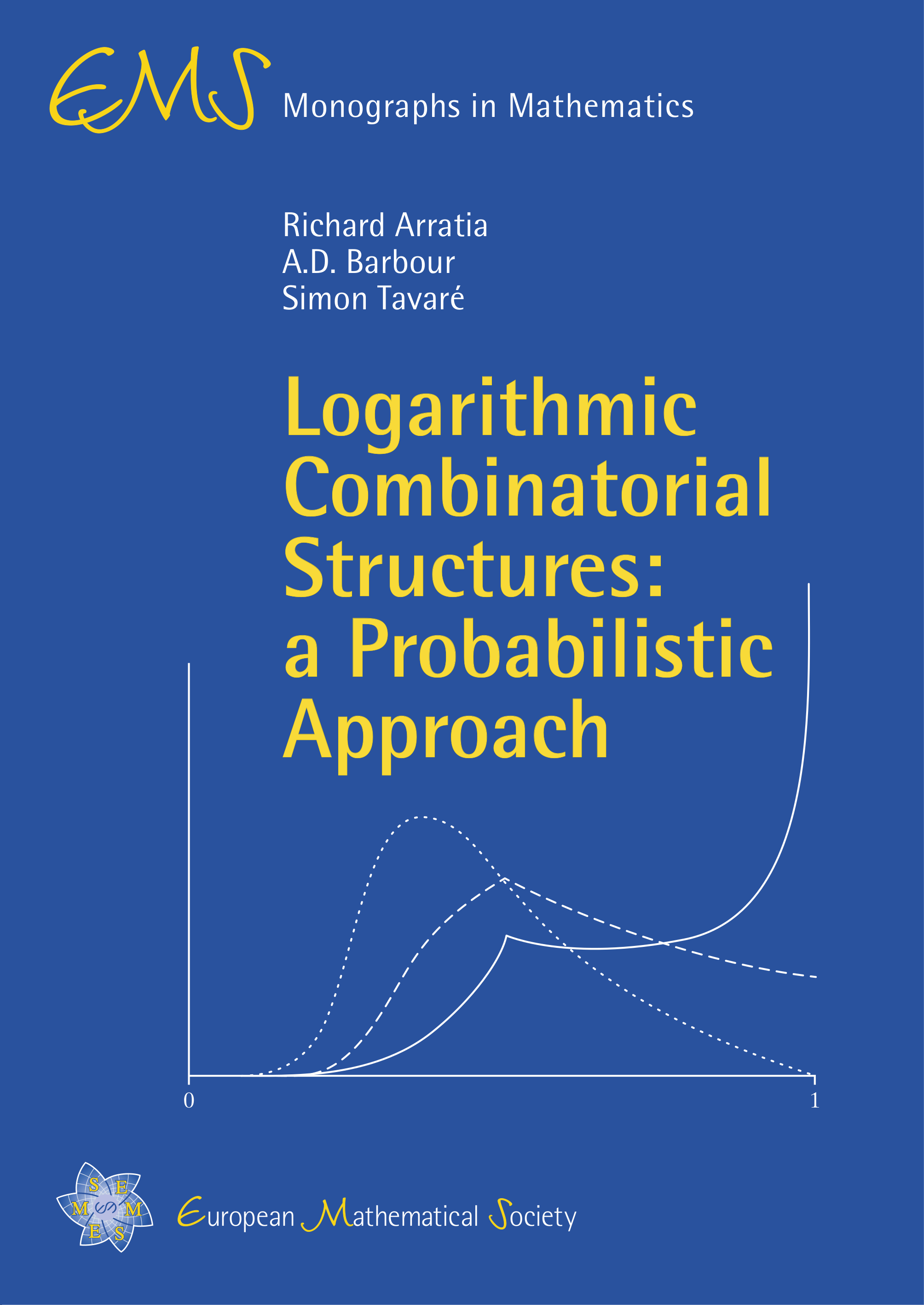Logarithmic Combinatorial Structures: A Probabilistic Approach
Richard Arratia
University of Southern California, USAA. D. Barbour
University of Zürich, SwitzerlandSimon Tavaré
University of Southern California, USA

A subscription is required to access this book.
The elements of many classical combinatorial structures can be naturally decomposed into components. Permutations can be decomposed into cycles, polynomials over a finite field into irreducible factors, mappings into connected components. In all of these examples, and in many more, there are strong similarities between the numbers of components of different sizes that are found in the decompositions of `typical' elements of large size. For instance, the total number of components grows logarithmically with the size of the element, and the size of the largest component is an appreciable fraction of the whole.
This book explains the similarities in asymptotic behaviour as the result of two basic properties shared by the structures: the conditioning relation and the logarithmic condition. The discussion is conducted in the language of probability, enabling the theory to be developed under rather general and explicit conditions; for the finer conclusions, Stein's method emerges as the key ingredient. The book is thus of particular interest to graduate students and researchers in both combinatorics and probability theory.